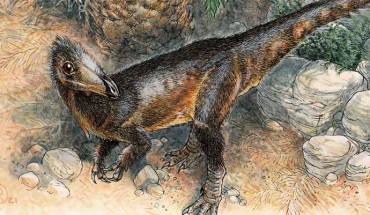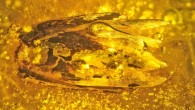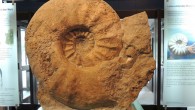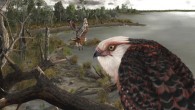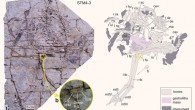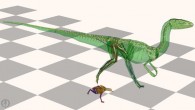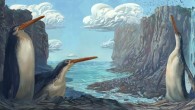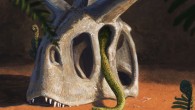Paleontologists have described a new genus and species of coelophysoid theropod dinosaur from the Late Triassic deposits of Pant-y-ffynnon in southern Wales. Life reconstruction of Pendraig milnerae among the fissures of Pant-y-ffynnon and three individuals of the rhynchocephalian lepidosaur Clevosaurus cambrica during the Late Triassic epoch. Image credit: James Robbins. The new dinosaur species, named Pendraig milnerae, lived during the Late Triassic...

